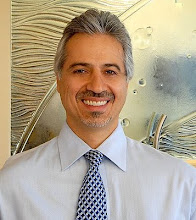PRF
stands for platelet rich fibrin.
The use of PRF in dentistry was first introduced by its
inventor Dr. Joseph Choukroun MD from France.
Healing
factors as related to the patient:
1) When a patient has low vitamin D levels; below 30 ng per ml of blood, healing
will be slowed, and it is also associated with higher levels of allergies. The
human body produces its own antibiotics, vitamin D is necessary for this
process. (Reference: Olsen, European Journal of clinical microbiology)
Deficiency
of vitamin D increases the prevalence of the harmful strains of the following
bacteria in the body: Staphylococcus, Streptococcus, Klebsielia, E. coli, and
Candida.
57% of
patients going through surgery of any kind have a deficiency in vitamin D. Deficiency
in vitamin D also increases the prevalence of neuromuscular pain by 50%. Supplementation
with vitamin D should be with D2 & D3 for one month before surgery for
patients who are deficient in vitamin D.
Furthermore,
there is a correlation between higher levels of vitamin D and lower LDL and
" bad cholesterols".
2) High
levels of LDL are proportional with high levels of oxidized LDL, which is
responsible for the death of the osteoblast cells. (Reference M. Brudeur 2009
cholesterol metabolism and osteoblasts)
3) Higher
viscosity of blood is proportional to Hematocrit levels over 45%, which
creates sluggish blood flow and slows down the healing.
4) High
blood pressure and Atherosclerosis also reduce the blood flow.
5)
Smokers typically have high LDL, high hematocrit levels, high blood pressure,
and Atherosclerosis.
If you have any questions, please contact your San Diego Holistic Dentist, Dr. Fallah for more information.
If you have any questions, please contact your San Diego Holistic Dentist, Dr. Fallah for more information.






